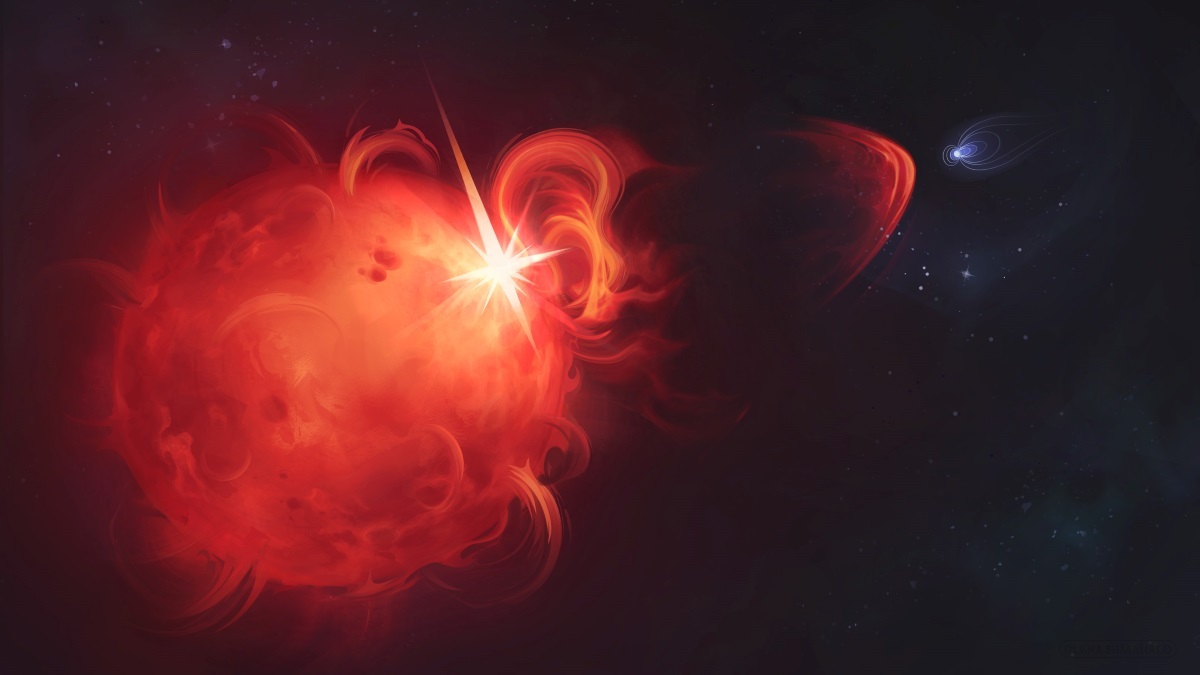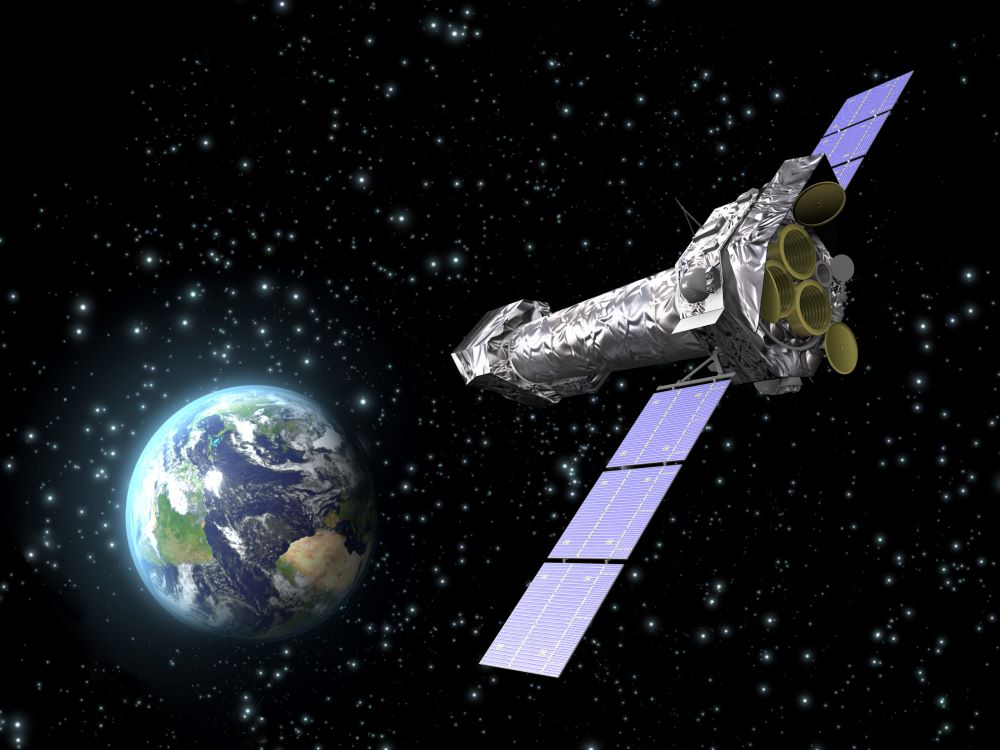14.11.2025

An artist’s impression of a large red star releasing a bright, explosive burst of light. Credit: Olena Shmahalo/Callingham et al.
Astronomers have observed a coronal mass ejection (CME) from a star other than our Sun for the first time.
In our solar system, CMEs are powerful eruptions from the Sun which send massive amounts of material into space. These bursts trigger auroras on Earth, shed atmospheres of inner planets and have the potential to cause major issues for human technology like GPS.
CMEs are common. In the Sun’s 11-year solar cycle they occur about once a week during solar minimum and 2 to 3 times a day during solar maximum.
The Sun is a fairly average star so astronomers have assumed that other stars would also produce CMEs. The issue has always been actually seeing them.
“Astronomers have wanted to spot a CME on another star for decades,” says Joe Callingham of the Netherlands Institute for Radio Astronomy (ASTRON), author of the new research published in Nature. “Previous findings have inferred that they exist, or hinted at their presence, but haven’t actually confirmed that material has definitively escaped out into space.
“We’ve now managed to do this for the first time.”
Callingham and colleagues spotted a short, intense burst of radio waves coming from a star just 40 light-years away – a stone’s throw by cosmic standards.
“This kind of radio signal just wouldn’t exist unless material had completely left the star’s bubble of powerful magnetism,” says Callingham. “In other words, it’s caused by a CME.”
The star is a red dwarf – a faint and cold type of star – about half the mass of the Sun. It is rotating 20 times faster, with a magnetic field 300 times more powerful, than the Sun.
Its CME was picked up by the European Space Agency’s (ESA) XMM-Newton space observatory and Europe’s LOFAR telescope using new data processing methods developed by co-authors of the new study.

An artist's impression of XMM-Newton. Credit: ESA-C. Carreau.
A coronal mass ejection coming from the Sun on 27 May 2024 ESA
“We needed the sensitivity and frequency of LOFAR to detect the radio waves,” says co-author David Konijn, a PhD student at ASTRON. “And without XMM-Newton, we wouldn’t have been able to determine the CME’s motion or put it in a solar context, both crucial for proving what we’d found. Neither telescope alone would have been enough – we needed both.”
The team say their findings could be important in the hunt for extraterrestrial life.
Most of the exoplanets found to date orbit around red dwarfs. But what if a star is too violent or active for life to form? Eliminating such systems could narrow the search for alien life.
“This work opens up a new observational frontier for studying and understanding eruptions and space weather around other stars,” says Henrik Eklund, an ESA research fellow based at the European Space Research and Technology Centre (ESTEC) in the Netherlands.
“We’re no longer limited to extrapolating our understanding of the Sun's CMEs to other stars. It seems that intense space weather may be even more extreme around smaller stars – the primary hosts of potentially habitable exoplanets. This has important implications for how these planets keep hold of their atmospheres and possibly remain habitable over time.”
Quelle: CONNECTSCI

